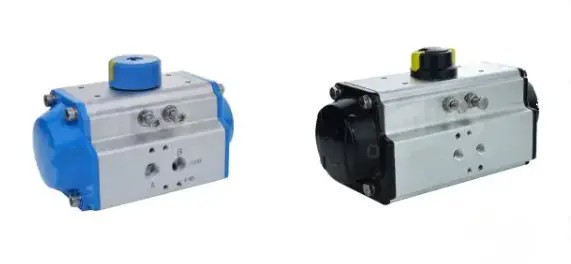Ensuring Reliability: Maintenance Strategies for Pneumatic Control Valve Actuators
Introduction
Pneumatic China Control Valves actuators are vital components in industrial automation, providing precise regulation of fluid flow, pressure, and temperature. Their smooth and accurate operation is essential to maintaining process stability and efficiency. Like all mechanical systems, however, pneumatic actuators require regular maintenance to maximize performance, reduce downtime, and extend their service life. This article explores how pneumatic control valve actuators work and discusses three primary maintenance strategies: run-to-failure, preventive maintenance, and predictive maintenance.
Understanding Pneumatic Control Valve Actuators
Pneumatic control valves regulate valve position through a combination of an actuator and a positioner, which respond to signals from distributed control systems (DCS) or programmable logic controllers (PLC). Modern positioners typically convert a 4–20 mA electrical signal or a 3–15 psig air signal to control the actuator’s air supply, enabling precise valve positioning.
Some older valves use simpler diaphragm actuators without positioners, but these lack the fine control and responsiveness needed in today’s automated systems.
An important operational prerequisite is clean, dry air supply. Contaminated air containing moisture, oil, or debris can degrade actuator performance, cause increased wear, and lead to premature failure. Therefore, high-quality filtration and drying systems are crucial for optimal actuator function.
Maintenance Strategies for Pneumatic Control Valve Actuators
1. Run-to-Failure Maintenance
This reactive strategy involves operating valves until failure occurs. While seemingly cost-saving for non-critical applications, run-to-failure carries significant risks:
- Potential for severe valve damage and expensive repairs
- Process contamination and product quality issues
- Unexpected downtime leading to operational losses
Because of these risks, run-to-failure is generally unsuitable for critical or continuous processes.
2. Preventive Maintenance
Preventive maintenance schedules valve servicing at fixed intervals, usually during planned plant shutdowns. It involves disassembling valves, inspecting parts, and replacing seals or worn components before failure occurs.
Advantages:
- Extends valve life by proactively addressing wear
- Maintains consistent valve performance
Challenges:
- Possible unnecessary servicing of valves still in good condition
- Requires stocking spare valves and parts
- Labor and material costs can be high
Some plants use spare valve swaps during shutdowns to minimize downtime, allowing maintenance on removed valves without disrupting operations.
3. Predictive Maintenance
Predictive maintenance employs real-time monitoring and advanced diagnostics to detect valve degradation early and schedule maintenance only when needed.
Key features include:
- Smart positioners tracking valve stroke speed, torque, cycle counts, and stiction
- Data integration with flow and pressure sensors to assess valve health
- Automated alerts signaling performance decline before failure
This approach reduces unnecessary maintenance, lowers costs, and significantly improves reliability, especially for continuous, high-stakes processes in petrochemical, power generation, and pharmaceutical industries.
The Role of Modern Positioners in Maintenance
Smart positioners have transformed actuator maintenance by enabling:
- Self-diagnostics to detect abnormal wear or sluggish response
- Predictive algorithms that forecast maintenance needs based on performance trends
- Remote monitoring capabilities for quick diagnostics without site visits
Incorporating these technologies into maintenance plans helps optimize actuator uptime and reduces emergency repairs.
Best Practices for Maintaining Pneumatic Control Valves
- Regular Inspections: Check actuators, positioners, and air supply components for wear, leaks, or contamination.
- Proper Lubrication: Follow manufacturer guidelines to lubricate moving parts, minimizing friction and wear.
- Air Quality Control: Use high-quality filters and dryers; replace filters regularly to ensure clean, dry air supply.
- Adopt Smart Technology: Utilize smart actuators and positioners integrated with control systems for real-time diagnostics.
- Train Personnel: Equip maintenance teams with skills to manage advanced valve technologies and predictive tools.
Conclusion
Maintaining pneumatic control valve actuators is essential for reliable process control and cost-efficient operation. While run-to-failure may suffice in non-critical situations, most industries benefit greatly from preventive or predictive maintenance strategies.
Leveraging smart positioners and predictive analytics allows for proactive servicing, reducing unplanned downtime and extending valve life. Coupled with rigorous best practices—such as maintaining air quality and regular inspections—these strategies help ensure pneumatic control valves operate safely, efficiently, and consistently in today’s demanding industrial environments.
Embracing a forward-looking, technology-driven maintenance approach is no longer optional—it is vital for maintaining competitive advantage and operational excellence. Learn more about Google SEO.





Comments